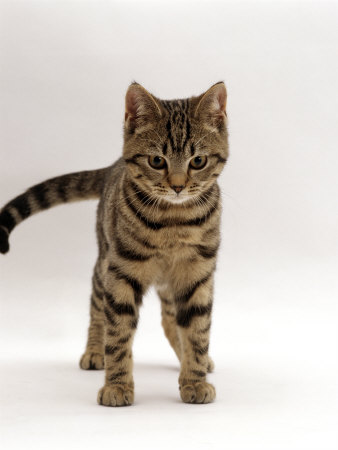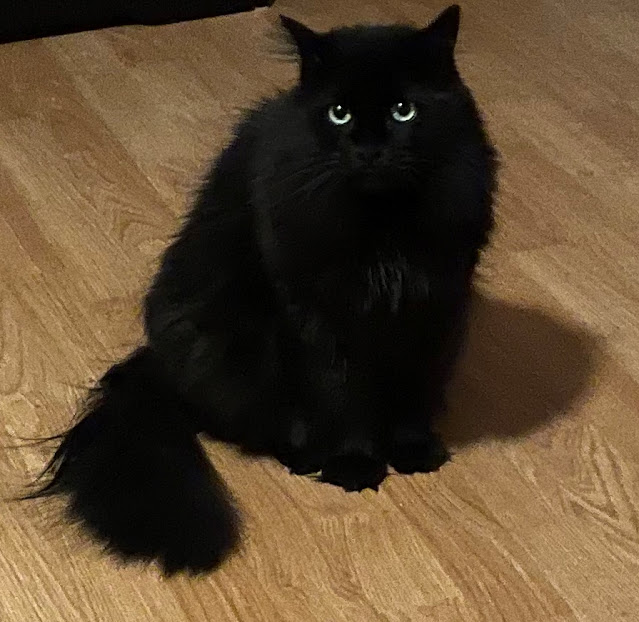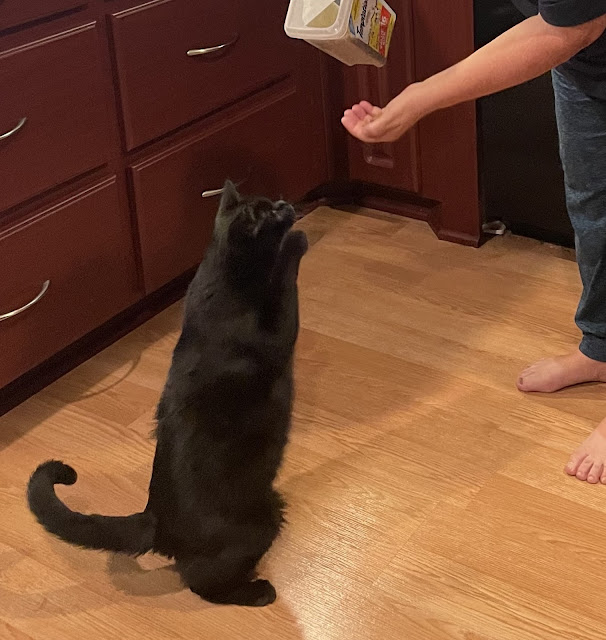Feral Cats 4: Wooper, the Odd Duck, er, Cat

This is a series of Caturday posts on the topic of taking in feral cats . General information (from pervious posts): For a few decades, we have rescued feral cats. In fact, with only one exception, our "domestic" cats have been ferals that we brought inside to join other ferals, already domesticated, as part of a bonded cat family. Right now, we have five cats (alas, Murjan , the single non-feral cat we had, died from cancer last fall), all of whom get along pretty fabulously. Of course, all of that is easier said than done, and the bonding took time -- lots of it. Here are some of the things we did to create our cat family, some of which is not at all typical of what others have done, but it has worked for us. We don't trap the feral cats at all; we win them over and invite them in. We do this by feeding them a distance from the house and walking away, then moving the dish closer and closer to the house and walking less and less far away, until they are eating ...





